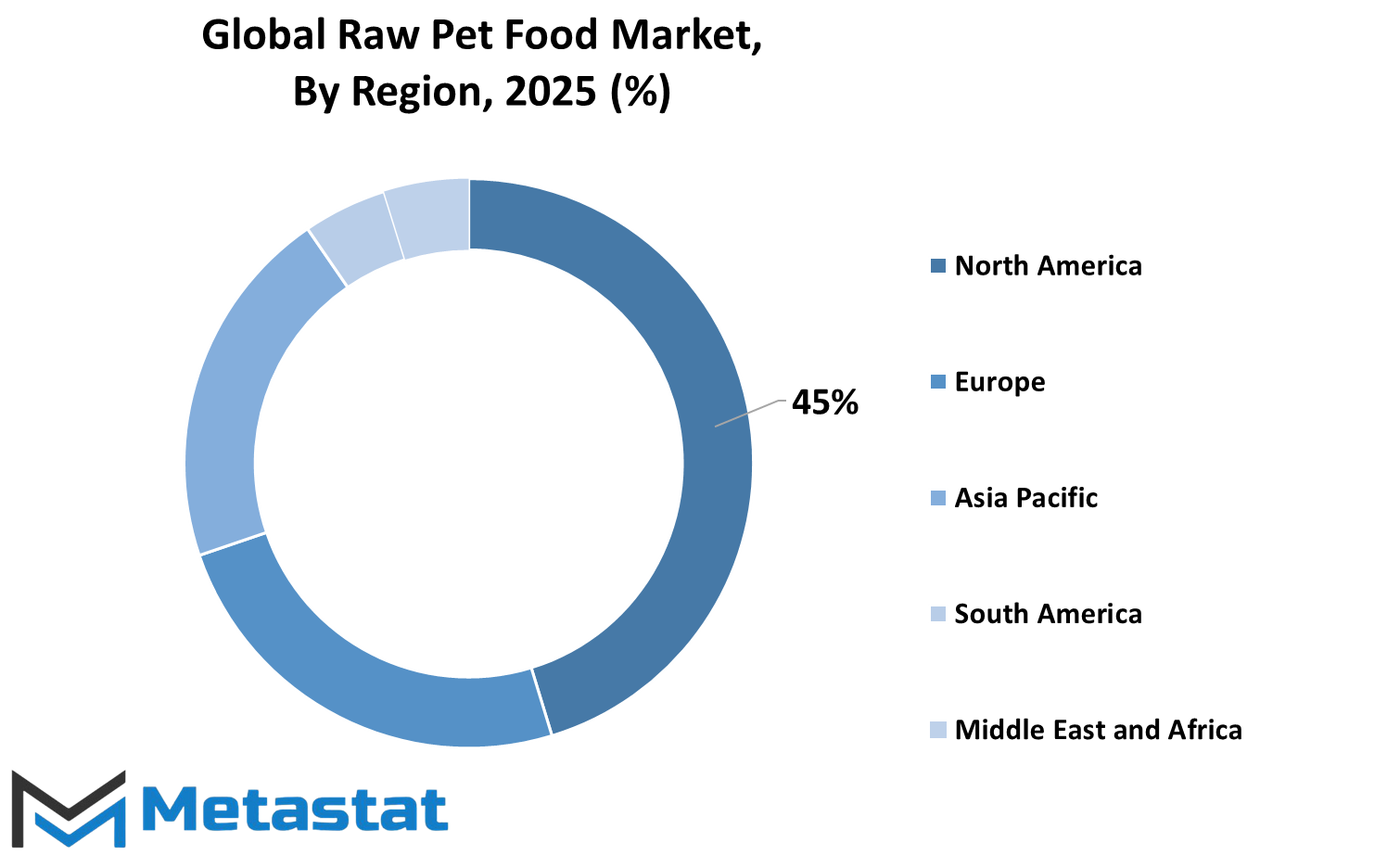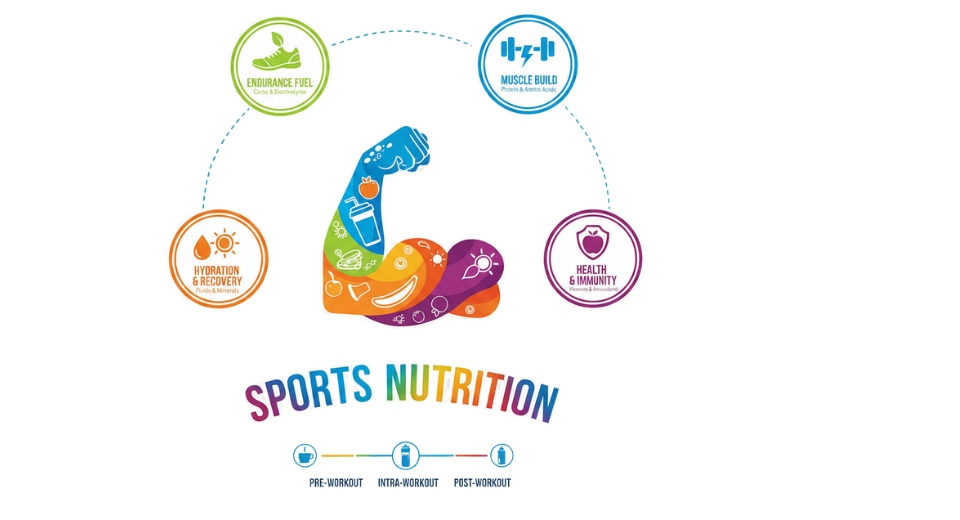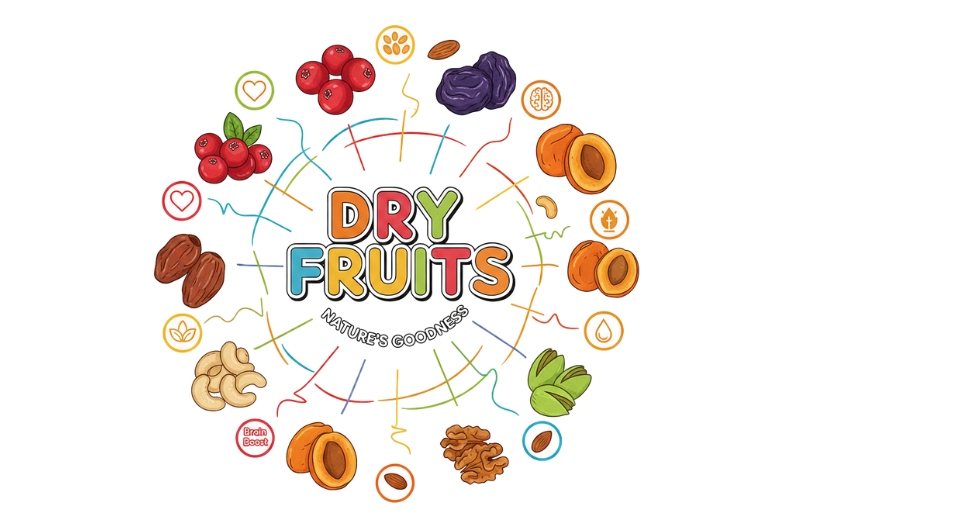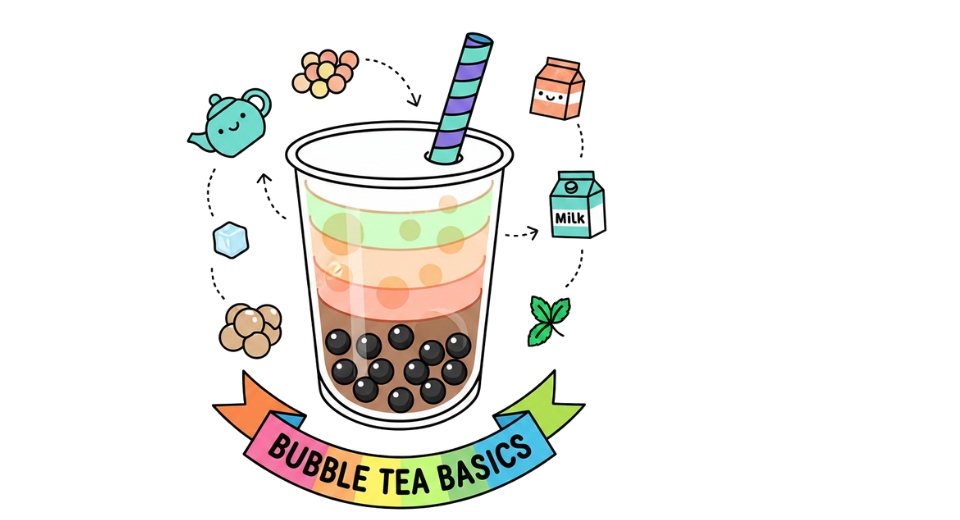MARKET OVERVIEW
The Global Raw Pet Food market and industry are a very unique sector as they are devoted to providing pets with unprocessed, natural nutrition. It is a large market that has several products that offer raw, minimally processed food alternatives for the dietary needs of domestic animals. This is an industry where pet owners, becoming more and more aware of the need for balanced nutrition in their pets, are demanding this industry to fulfill diverse consumer preferences and expectations. This market focuses on providing high-quality, nutrient-rich food that helps support the overall health of pets.
In contrast to traditional commercial pet food, raw pet food is primarily constituted from raw meat, bones, fruits, and vegetables, providing a diet for the pet that comes closest to an ancestral diet. It has aroused significant interest from pet owners in keeping their pets healthy and in their best interest. By addressing concerns related to artificial additives and over processed ingredients, the Global Raw Pet Food market has established itself as an appealing option for a growing demographic of health-conscious consumers. In the years ahead, the Global Raw Pet Food market will undergo significant transformation because it will strive to be in concert with changing consumer preferences and global trends. Innovation will be in the center; companies will definitely invest in highly advanced packaging systems to keep freshness and quality.
In addition, there will be emphasis on transparency: customers are looking for more explicit information about how ingredients were sourced and how production was carried out. The market will be dominated by technology influence, mainly in the channels of distribution and customer engagement. Online platforms will play a vital role in advertising raw pet food products, sharing comprehensive information, and allowing for direct communication between brands and customers. This will give companies an opportunity to understand better what their customers need and allow them to gain customer loyalty and trust.
Another set of challenges related to sustainability and environmental concerns will also challenge the Global Raw Pet Food market. Companies operating in this sector will need to develop sustainable methods of sourcing their products, for example, and come up with new packaging materials that are environmentally friendly. Working together with environmental conservation organizations will be the new normal, thus keeping the market sustainable in light of increased global scrutiny. Educational programs will also be part of this industry, as companies will want to educate consumers on the benefits and safe handling of raw pet food. The market will create an educated customer base that is confident in making informed decisions by dispelling myths and setting clear guidelines.
All in all, the global raw pet food market and the industry that serves it is prepared to meet the dynamic future which is fueled by innovation, sustainability, and greater comprehension of the importance of the customers' needs. Indeed, as challenges would occur, so shall the fate of the long-run success of this market to service the pet owner. These complex changes will propel the industry ahead through technological growth, strategic alliance, and increasing consumer education of the industry for relevance and survivability.
Global Raw Pet Food market is estimated to reach $11,171.64 Million by 2032; growing at a CAGR of 15.1% from 2025 to 2032.

GROWTH FACTORS
The global raw pet food market is significantly growing with every passing day since more pet owners are getting cognizant about the benefits of their pets' consumption of natural, raw food products. This is due to increased awareness in the knowledge on how diet determines the general well-being and health of pets. The modern pet owner is now tilting towards fresh, preservative-free meals rather than processed ones to keep their pets healthier and more nutritious. There is indeed an indication of this trend toward recognizing pets as integral family members, much like human diets are studied and planned more significantly.
However, the price of raw pet food is not cheap and creates a limitation to its access to many pet owners who have lower budgets. High prices for premium products usually result in discouragement to purchase these products, despite their apparent benefits. Raw food ingredients pose another major risk in terms of bacterial contamination. These are safety issues with raw diets that make even pet owners who acknowledge the health benefits hesitant to make a change. The concerns must be addressed by manufacturers and suppliers; thus, growth for the industry is achievable.
On the other hand, the market has lots of scopes for expansion, especially in the premium segment of pet foods. Pet owners who desire improved nutrition for their pets are ready to pay a premium for those products that assure higher health value. This can help companies create innovative raw pet food products and thus provide customers with more varied, safe, and appealing options. Other factors contributing to increased customer confidence include packaging, quality control measures, and more transparent communication of the sources of ingredients used.
In the coming years, the raw pet food market is likely to grow as manufacturers in this market capitalize on these opportunities and look forward to working over the existing hurdles. By taking into account the cost and safety concerns and continuing to educate pet owners about the advantages of raw diets, it's possible to expand the market to include a wider audience base. This reflects a developing interest in healthier, fresher, and better diets for pets from a company that cares about pet health while continuing to satisfy discerning owners' expectations.
MARKET SEGMENTATION
By Type
The Raw pet food market is one of the growing global industries, and in recent years, its major driving force has been the desire for healthier and more natural feeding options by pet owners for their animals. The primary reason for this shift in preference is an increasing awareness of the benefits of feeding pets minimally processed foods closest to their ancestors' diets. With a shift to the well-being of their pets, pet owners are increasingly switching away from high-processed kibble and canned foods towards others that are aimed at giving a better digestion period, energy level, and glossy coat.
The raw pet food market can be segmented into its types, out of which the most considered is the raw frozen food segment, accounting for $1,911.19 million. This is the most preferred option since it retains the nutritional integrity of the ingredients and yet offers convenience for storage and feeding. Raw freeze-dried food has also come to attention since it offers all the benefits of raw feeding but with a longer shelf life and easy preparation. The third category is the raw dehydrated food, which similarly provides convenience through moisture removal without compromising on the nutrient retention. Lastly, raw fresh food appeals to those pet owners that prefer the simpleness and immediacy of fresh ingredients for their pets.
The increased demand for raw pet food resulted from the overall general trend of more people treating pets as part of their family. Most people are mindful of the components in their pet's diet as they seek a healthier diet for their pets. Brands in the raw pet food market have responded by offering innovative products that make it easier than ever for consumers to find options tailored to their pets' needs. This includes formulas catering to specific dietary requirements or preferences, such as grain-free or single-protein options.
The raw pet food revolution, on one hand, however brings various barriers. Issues over security such as its possible bactericidal risk forced both manufacturer companies and end-customers to think how they might help themselves before their animals suffer through various bacteria-carrying risk, handling issues at sourcing stages of production or other post-stores related risk factors.
The overall raw pet food market in the world speaks to an increasingly high-quality diet for pets, made from healthy meals. Ongoing innovation and education will only make this trend grow in terms of how owners address their pets' diets.
By Application
The global raw pet food market is growing because more and more pet owners want to provide healthy dietary options for their companions. Given the greater awareness of fresh and natural ingredients' benefits, raw pet food has become the most preferred choice for them. It also reflects an increasing awareness in the minds of pet owners that diet plays an important role in determining the health status of pets. The market for nutritional meals has been segmented under application, consisting of nutritional meals and supplementary diets to cater to varied needs of the pets.
Nutritional meals are designed to provide a full and balanced diet to ensure pets obtain all necessary nutrients for their growth and health. These meals have a concentration of high-quality proteins, vitamins, and minerals with no additives or preservatives associated with traditional pet food. This makes it an attraction to the owners who wish for wholesome ingredients that ensure the well-being of their pets as food consumed would ensure a healthy lifestyle.
Whereas supplementary diets are usually used to address a particular gap in the nutrition or enhance some aspects of a pet's health, they do not replace the regular diet but act as additives to complement the primary diet. These products are often enriched with such specialized ingredients to help in the improvement of joint health, quality of the coat, or enhancing their immune system. This offers pet owners options to make tailored nutrition with respect to special requirements or health issues that may affect their pets.
Increased disposable income coupled with increased consciousness of pet health are among other factors driving these applications. Increased awareness of a pet's lifestyle and treatment makes the owners invest in quality that would benefit pets as well, such as wholesome feeding. Consumer expectations on quality along with transparency now force brands to innovate and thus bring forth appropriate products.
In addition, advances in packaging and distribution allow more accessible and convenient ways for the consumer to obtain raw pet food. Companies seem to provide the best responses to demand with user-friendly options like frozen or freeze-dried raw foods, which mean owners could easily incorporate these products into their pets' diets.
With increasing attention to pet health, global demand for raw pet food is expected to increase further. The focus on nutritional meals and supplementary diets to enhance the quality of life for pets proves a shared commitment for pets worldwide.
By Sales Channel
The global raw pet food market is growing as pet owners want healthy dietary options for their companions. Raw pet food is the most preferred choice for them because they are now better aware of the benefits of fresh and natural ingredients. This also portrays increasing awareness among the minds of the pet owners, as it recognizes diet is playing an important role in defining the health status of the pets. Under application, this market has divided nutritional meals into nutritional meals and supplementary diets which serve diverse requirements of pets.
Nutritional meals are prepared to ensure pets get a balanced diet, which means pets receive all the required nutrients to grow and live healthily. These meals are concentrated with high-quality proteins, vitamins, and minerals without additives and preservatives present in traditional pet food. This makes it an attraction to the owners who wish for wholesome ingredients that ensure well-being for their pets as food consumed would ensure a healthy lifestyle.
Whereas supplementary diets are usually used to address a particular gap in the nutrition or enhance some aspects of a pet's health, they do not replace the regular diet but act as additives to complement the primary diet. These products are often enriched with such specialized ingredients to help in the improvement of joint health, quality of the coat, or enhancing their immune system. This offers pet owners options to make tailored nutrition with respect to special requirements or health issues that may affect their pets.
Increased disposable income coupled with increased consciousness of pet health are among other factors driving these applications. Increased awareness of a pet's lifestyle and treatment makes the owners invest in quality that would benefit pets as well, such as wholesome feeding. Consumer expectations on quality along with transparency now force brands to innovate and thus bring forth appropriate products.
In addition, advances in packaging and distribution allow more accessible and convenient ways for the consumer to obtain raw pet food. Companies seem to provide the best responses to demand with user-friendly options like frozen or freeze-dried raw foods, which mean owners could easily incorporate these products into their pets' diets.
With increasing attention to pet health, global demand for raw pet food is expected to increase further. The focus on nutritional meals and supplementary diets to enhance the quality of life for pets proves a shared commitment for pets worldwide.
By End User
It is through this sense of awareness from pet owners towards nutrition that a pet lives in the best form possible that a global raw pet food market attracts much interest lately. Pet owners are becoming cautious over what to feed their animals and are taking options that ensure these are naturally unprocessed so that they reflect healthier lifestyles in line with preference. This has led to the increase of raw pet food into the limelight, especially now that individuals become aware of the benefits associated with feeding pets foods that are more similar to their natural diet.
The market is segmented based on end-user categories, targeting dogs, cats, and other pets, including ferrets and small mammals. Due to the popularity of dogs as pets and the perception that raw diets complement their general health, dogs form a significant segment of this market. Followers of raw food diets claim that such diets can lead to better digestion, healthier skin and coat, and more energy. Of interest to many cat owners also are raw foods because this is much closer to a wild cat's natural diet, which contains much more raw meat than cooked meat. Other diversified animals, which fall into this trend, are ferrets and other small mammals; owners seek better health in these pets as well.
Online sales platforms have further accelerated the development of the raw pet food market. Online shopping stores have easily provided pet owners with a huge variety of options for raw foods based on the needs of individual pets. Moreover, manufacturers have accommodated the growing demand by creating freeze-dried or frozen variants that are both convenient and offer the nutritional properties of raw foods.
However, the market for raw pet food has risks, such as food safety. The handling required to prevent spoilage is significant. Pet owners need to seriously consider the purchase and storage requirements of raw products to ensure safe and healthy ingestion. Despite these adverse factors, market growth continues in response to better awareness and in light of more innovative solutions available to mitigate the attendant risks.
The overall interest in feeding pets a diet that emphasizes their health and well-being has shaped the global raw pet food market. Increasing availability and quality are factors that make this market steadily grow, as more pet owners opt for raw options suited to their companions' needs.
|
Forecast Period |
2025-2032 |
|
Market Size in 2025 |
$4,242.53 million |
|
Market Size by 2032 |
$11,171.64 Million |
|
Growth Rate from 2024 to 2031 |
15.1% |
|
Base Year |
2024 |
|
Regions Covered |
North America, Europe, Asia-Pacific, South America, Middle East & Africa |
REGIONAL ANALYSIS
Global regional segment for the raw pet food market consists of five significant regions, that are North America, Europe, Asia-Pacific, South America, and the Middle East & Africa, where each region would have its characteristic and growth prospects.
The market is further divided into three key countries in North America: the United States, Canada, and Mexico. Each of these countries has completely different opportunities for raw pet food brands, depending on consumer preference and government regulations. In the region, the biggest market is found in the United States, as people who raise and keep domestic pets highly demand the consumption of natural and organic foods in pet diets in order for the pet to live a healthy life and well-being. While in Canada and Mexico, it is developing to an ever increasing consumption of pet foods, not so high like the United States.
Another region with high importance of the global raw pet food market is Europe. It includes various countries such as the United Kingdom, Germany, France, and Italy, alongside other European counties. This particular region is entirely inclined toward products of good quality with minimum environmental impact by the pet food products. Lately, many have started exploring fresh and raw food for the pets in this area. The trend is more notable in countries like Germany and the UK where pet ownership is high, and owners are getting more and more conscious about the nutritional value of food being provided to their pets.
Asia-Pacific is another rapidly growing region, consisting of countries such as India, China, Japan, South Korea, and other countries in the broader Asia-Pacific area. This region offers a rare opportunity for the raw pet food market as pet ownership continues to rise in many Asian countries. In addition, consumers are increasingly becoming aware of the quality of pet food. Although the markets in Japan and South Korea are well-established, in countries like China and India, the demand for raw and premium pet food products is increasing as the pet care industry grows.
Pet food market in South America: Brazil, Argentina, and so forth. This region is also growing steadily with demand in the pet food market. Raw pet food does not have as much popularity in this region. However, with high demand in other regions, Brazil is showing interest in natural and healthy forms of pet food, mainly in natural forms, which is trending with the rising middle-class and disposable incomes.
Lastly, the Middle East & Africa region is also an incredibly diverse group for the raw pet food market, including all of the countries within the GCC, Egypt, South Africa, and other components of the region. In the region, slowly, premium pet food demand increases with a heightened awareness of importance to pet nutrition. The market is still in its early stages compared to other regions, with significant growth potential in the coming years.

COMPETITIVE PLAYERS
The raw pet food market across the world is growing at a steady pace because more pet owners are seeking out a raw food diet for their pets. Such rising demand is founded on the theory that raw foods are nutritionally better for the pets and can make them more healthy and vigorous. As awareness of the benefits of raw pet food spreads, many companies are emerging in the market, offering a wide range of raw food options for cats and dogs. Key players in the industry are constantly striving to meet the increasing demand for natural, wholesome pet food by ensuring that their products are not only nutritious but also safe for pets.
Bella and Duke Ltd. is among the most recognizable companies driving the raw pet food revolution. As a company with a commitment to offering quality raw food that would enhance the health and wellbeing of pets, Bella and Duke is celebrated for its promise of fresh ingredients and optimal nutrition. Similarly, The Farmer's Dog, Inc. is offering customized raw food tailored to the unique nutritional needs of every pet to be both nutritious and safe.
Instinct stands out by offering raw pet food options that are both freeze-dried and frozen, which would allow for greater convenience without losing the nutritional value of raw ingredients. Primal Pet Foods is widely known for premium raw food offerings catering to various dietary needs and preferences. Their approach is to use responsibly sourced ingredients and ensure that all their products are free of additives and preservatives.
Steve's Real Food also has a good reputation for its raw pet food, and all their products are made from human-grade ingredients, which makes it different from most other brands. BARF World, which stands for Biologically Appropriate Raw Food, is another brand that has a diet mainly based on the natural eating habits of carnivorous pets, offering raw food options for these needs.
Other influential players include Vital Essentials, Stella & Chewy's, and Raw Paws Pet Food, each offering premium raw food options without fillers or artificial ingredients. Darwin's Natural Pet Products specializes in the preparation of raw food by ensuring that these products are accurately balanced to provide optimum nutrition for the pets, while K9 Natural focuses more on raw food from high quality, sustainable raw ingredients. Another reason for Bones & Co. popularity is the healthy, raw food diet that maintains well-balanced development of pets.
The companies mentioned above, among others, contribute significantly to the progress of the raw pet food market. This way, the owners would have an easier time taking care of their pets since they are guaranteed of safe options.
Raw Pet Food Market Key Segments:
By Type
- Raw Frozen Food
- Raw Freeze-Dried Food
- Raw Dehydrated Food
- Raw Fresh Food
By Application
- Nutritional Meals
- Supplementary Diets
By Sales Channel
- Direct-to-Consumer (Online Subscriptions)
- Pet Specialty Stores
- Veterinary Clinics
- Supermarkets & Hypermarkets
- E-commerce Platforms
By End User
- Dogs
- Cats
- Other Pets (Ferrets, Small Mammals)
Key Global Raw Pet Food Industry Players
- Bella and Duke Ltd.
- The Farmer’s Dog, Inc.
- Instinct
- Primal Pet Foods
- Steve’s Real Food
- BARF World
- Vital Essentials
- Stella & Chewy’s
- Raw Paws Pet Food
- Darwin’s Natural Pet Products
- K9 Natural
- Bones & Co.
WHAT REPORT PROVIDES
- Full in-depth analysis of the parent Industry
- Important changes in market and its dynamics
- Segmentation details of the market
- Former, on-going, and projected market analysis in terms of volume and value
- Assessment of niche industry developments
- Market share analysis
- Key strategies of major players
- Emerging segments and regional growth potential








 US: +1 3023308252
US: +1 3023308252






